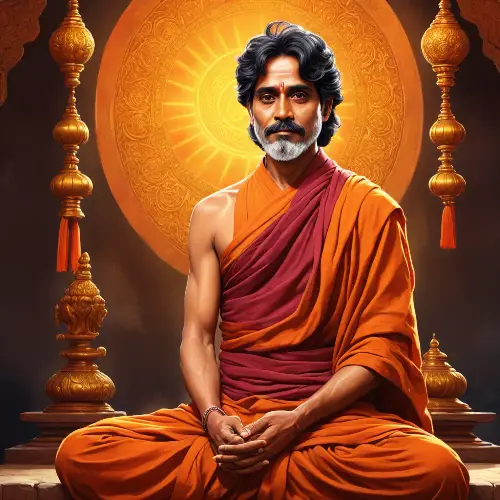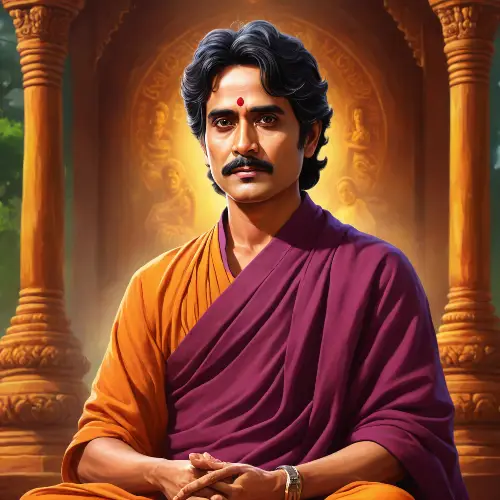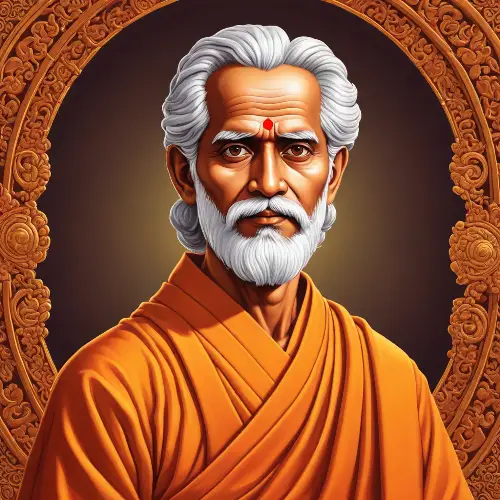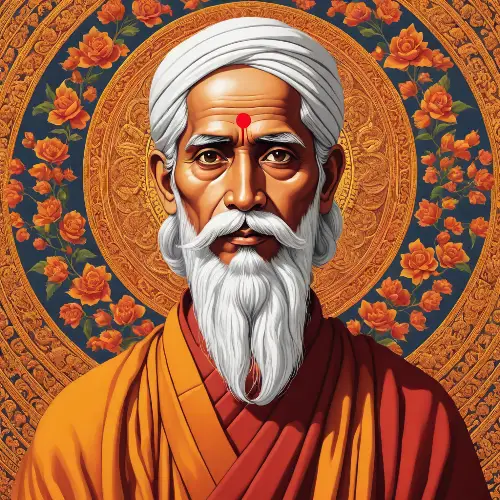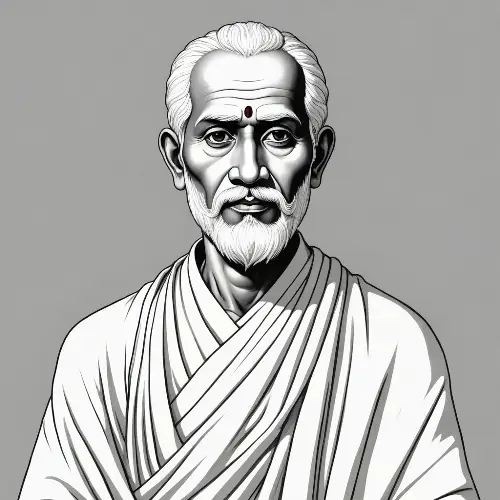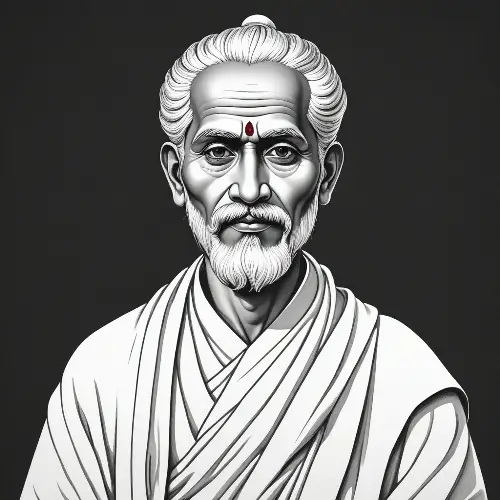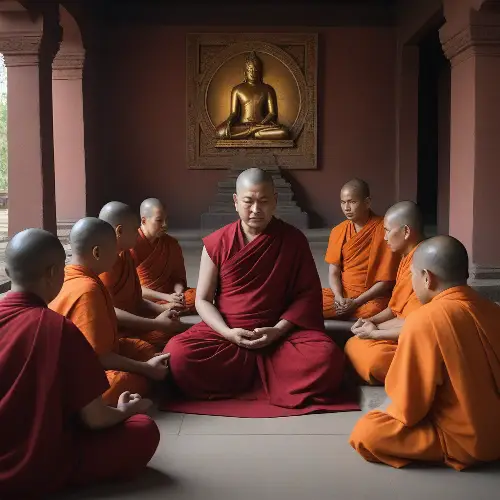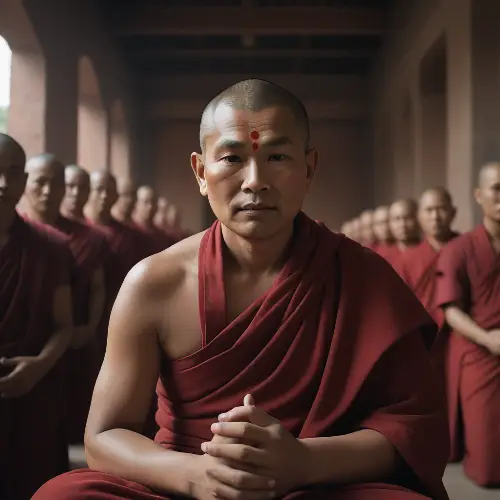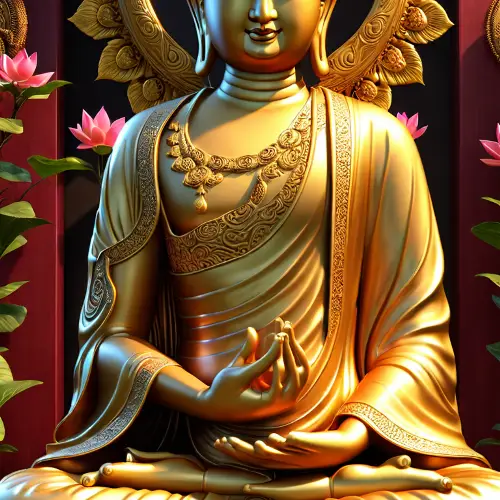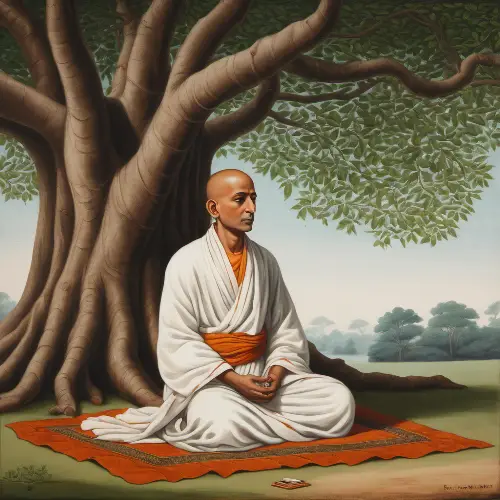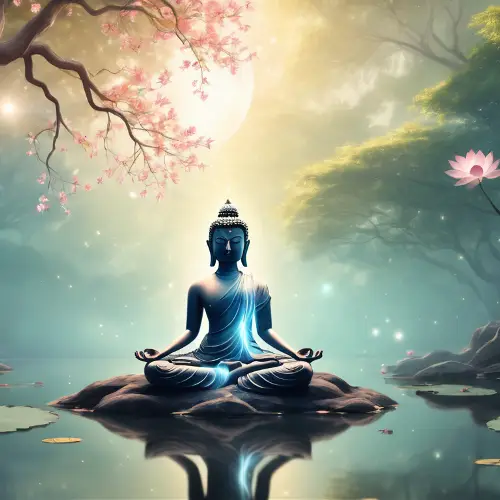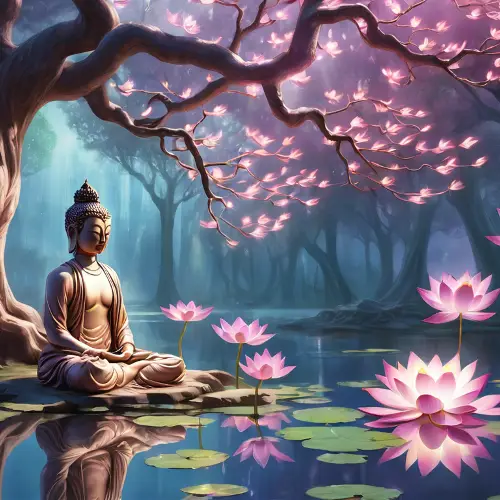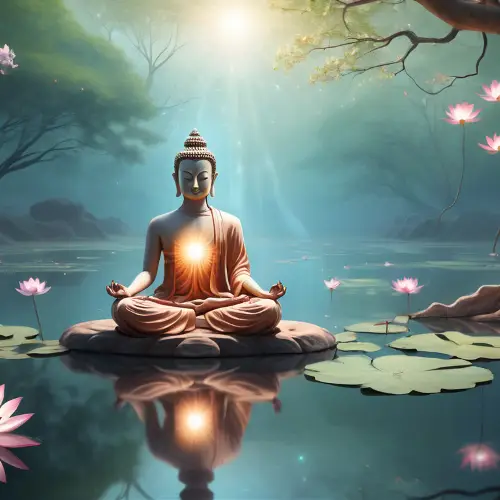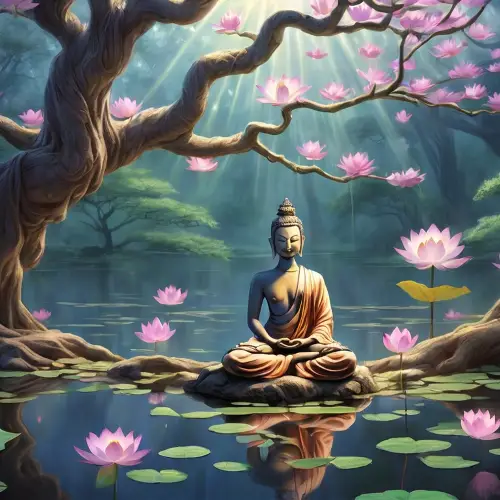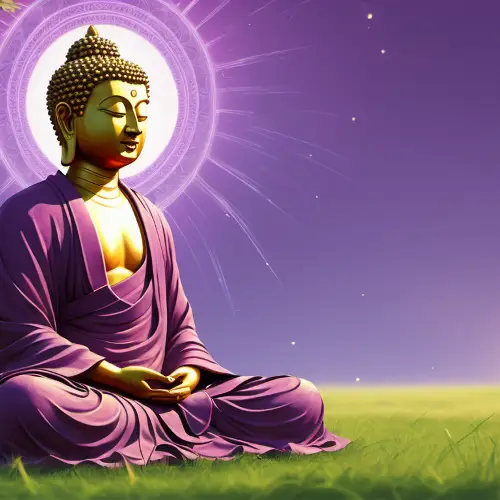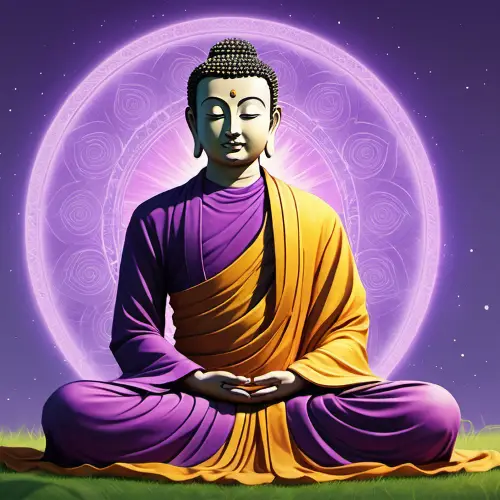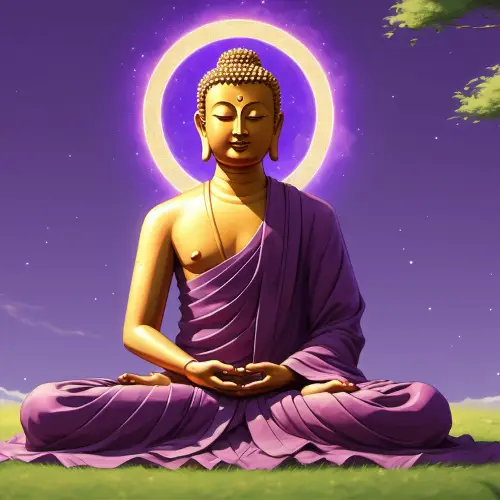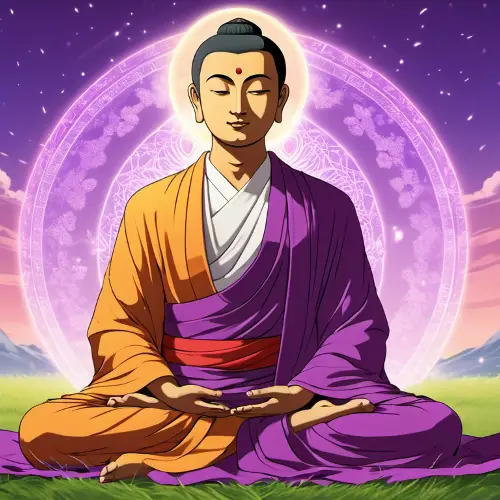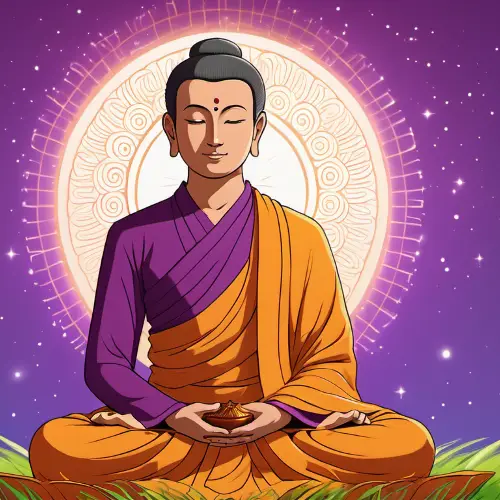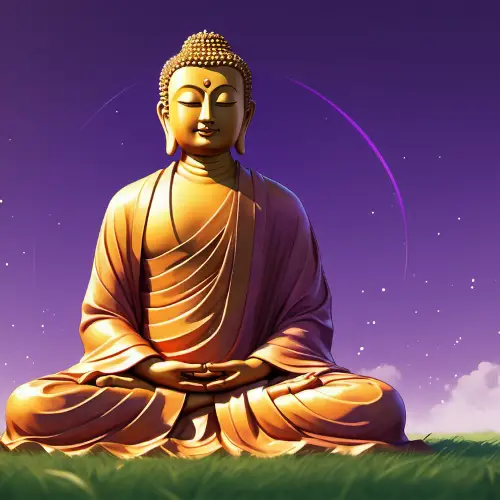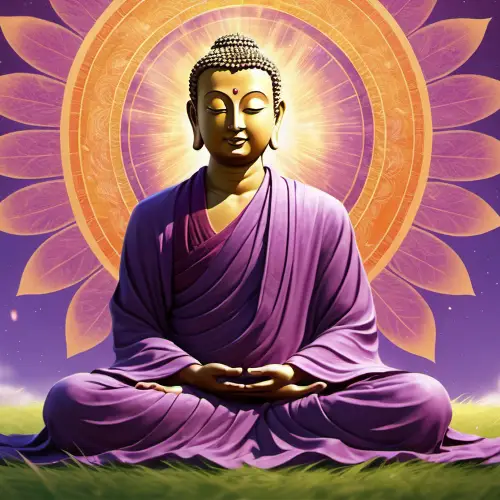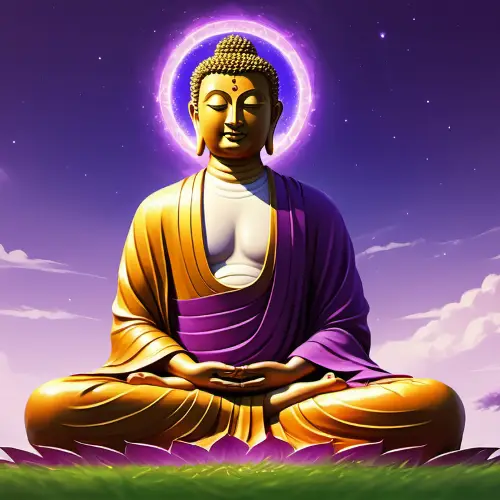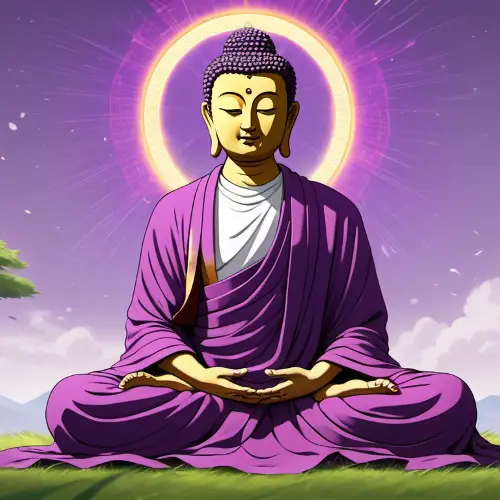Nagarjuna was a famous Buddhist teacher, the founder of Nihilism and a proponent of Madhyamaka school of thought . who can be seen in his divinity and calmness.
More Like This
Nagarjuna was a famous Buddhist teacher, the founder of Nihilism and a proponent of Madhyamaka school of thought . who can be seen in his divinity and calmness.
Acharya Nagarjuna was a famous Buddhist teacher, the founder of Nihilism and a proponent of Madhyamaka school of thought . who can be seen in his divinity and calmness. Nagarjuna with Thirty of the Eighty-four Mahasiddhas.
Acharya Nagarjuna was a famous Buddhist teacher, the founder of Nihilism and a proponent of Madhyamaka school of thought . who can be seen in his divinity and calmness and now in his wise old form. Nagarjuna with Thirty of the Eighty-four Mahasiddhas.
Acharya Nagarjuna was a famous Buddhist teacher, the founder of Nihilism and a proponent of Madhyamaka school of thought . who can be seen in his divinity and calmness and now in his wise old form. Nagarjuna with Thirty of the Eighty-four Mahasiddhas.
Acharya Nagarjuna was a famous Buddhist teacher, the founder of Nihilism and a proponent of Madhyamaka school of thought . who can be seen in his divinity and calmness and now in his wise old form. Nagarjuna with Thirty of the Eighty-four Mahasiddhas.
Acharya Nagarjuna was a famous Buddhist teacher, the founder of Nihilism and a proponent of Madhyamaka school of thought . who can be seen in his divinity and calmness and now in his wise old form. Nagarjuna with Thirty of the Eighty-four Mahasiddhas.
Acharya Nagarjuna was a famous Buddhist teacher, the founder of Nihilism and a proponent of Madhyamaka school of thought . who can be seen in his divinity and calmness and now in his wise old form. Nagarjuna with Thirty of the Eighty-four Mahasiddhas.
Acharya Nagarjuna was a famous Buddhist teacher, the founder of Nihilism and a proponent of Madhyamaka school of thought . who can be seen in his divinity and calmness and now in his wise old form. Nagarjuna with Thirty of the Eighty-four Mahasiddhas. Acharya Nagarjuna was a prominent Indian philosopher and Buddhist scholar who lived around the 2nd century CE. He is considered one of the most important figures in the history of Mahayana Buddhism, particularly within the Madhyamaka school. Nagarjuna's contributions to Buddhist philosophy have had a lasting impact, and his ideas continue to be studied and debated within the Buddhist tradition.
Acharya Nagarjuna, a revered Indian philosopher of the 2nd century CE, is renowned for his contributions to Mahayana Buddhism, particularly within the Madhyamaka school. Born in Southern India, Nagarjuna's exact life details are uncertain, but he is associated with profound philosophical insights. His influential work, the \"Mulamadhyamakakarika,\" expounds the Middle Way philosophy, emphasizing the emptiness (shunyata) of all phenomena. Nagarjuna's teachings stress the interconnected and interdependent nature of reality, challenging inherent existence. Imagining his facial features involves portraying a mature, contemplative figure, perhaps with facial hair, reflecting the monkhood associated with Buddhist scholars. Capture a serene expression conveying deep spiritual insight, dressed in traditional monk attire. While historical details on Nagarjuna's appearance are lacking, this artistic interpretation aligns with the wisdom and asceticism attributed to this influential figure in Buddhist philosophy.
Acharya Nagarjuna, a revered Indian philosopher of the 2nd century CE, is renowned for his contributions to Mahayana Buddhism, particularly within the Madhyamaka school. Born in Southern India, Nagarjuna's exact life details are uncertain, but he is associated with profound philosophical insights. His influential work, the \"Mulamadhyamakakarika,\" expounds the Middle Way philosophy, emphasizing the emptiness (shunyata) of all phenomena. Nagarjuna's teachings stress the interconnected and interdependent nature of reality, challenging inherent existence. Imagining his facial features involves portraying a mature, contemplative figure, perhaps with facial hair, reflecting the monkhood associated with Buddhist scholars. Capture a serene expression conveying deep spiritual insight, dressed in traditional monk attire. While historical details on Nagarjuna's appearance are lacking, this artistic interpretation aligns with the wisdom and asceticism attributed to this influential figure in Buddhist philosophy.
In the hallowed hall of ancient Nalanda University, the air vibrates with wisdom, a scene not just to be witnessed but felt at the core of one's being. It's here that the great Buddhist philosopher and logically astute monk, Kumārila Buddhist Monk Dharmakirti, shares the profundity of his insights.Imagine the redstone architecture around him, aged and wise like the teachings it cradles. His skin is the color of the earth—a rich tan symbolizing a life rooted in the forests of meditation and thought. He sits, a stern embodiment of the discipline that threads through Buddhism, yet his eyes, deep pools of compassion, offer a glimpse into his enlightened soul. The walls behind Dharmakirti are adorned with ancient, delicately preserved Buddha murals. They echo the serenity and complex simplicity of the path he expounds. His red monastic robes are a bright flame in the quietude, a beacon for all seeking illumination. These robes ripple lightly with the wisdom that has been breathed into them through generations. His face is clean-shaven, as is the tradition, each smooth line telling a tale of renunciation and scholarly pursuits. In one hand, he holds a Buddhist mala, the beads sliding through his fingers with each silent mantra, an act of mindfulness amidst scholarly debate. His students, a circle of monks in training, sit wrapped in the same red as their teacher, a symbol of unity in their quest for understanding. They hang on his every word, minds and hearts open. The majestic pose Dharmakirti strikes is more than physical; it's a metaphor for the axis of wisdom around which they all revolve—a celestial dance of intellect and spirit. This cinematic snapshot from ancient times captures more than a moment; it encapsulates an era—an enduring testament to the pursuit of knowledge and spiritual enlightenment that once flourished within the nurturing stone embrace of Nalanda.
The great Kumārila Buddhist Monk, Dharmakirti, exudes wisdom in this ultra-realistic, ultra-detailed composition. His tan skin contrasts with bright red monastic robes, and his stern yet compassionate face radiates divinity. A clean-shaven visage, with deep, wise eyes, holds a Buddhist prayer bead rosary.The camera captures this cinematic scene in the ancient Hall of Nalanda University, featuring sandstone architecture. Murals of Ancient Buddha adorn the walls, creating a majestic backdrop. Dharmakirti strikes a pose full of wisdom, teaching student monks seated around him.Volumetric lighting bathes the scene in soft, diffuse light, enhancing the ambiance of ancient wisdom.--ar 16:9 --s 400
A wide-angle oil painting illustrates the Great Buddhist Monk Dharmakirti in the Hall of Nalanda University. The aged Indian monk, with tan skin and bright red monastic robes, exudes calmness, his stern yet compassionate face reflecting deep wisdom. The scene is set against ancient sandstone architecture with murals of Buddha on the walls.The ultrarealistic and hyperdetailed portrayal by MSchiffer emphasizes contrast, capturing every nuance. Dharmakirti holds a Buddhist prayer bead rosary, teaching student monks in a majestic pose that invokes pride. The cinematic ambiance transports viewers to ancient times, immersing them in the rich history of Nalanda University.--ar 16:9 --s 500
The great Kumārila Buddhist Monk Dharmakirti, an aged Indian monk with tan skin, emanates calmness and wisdom in a cinematic scene. He wears bright red monastic robes, his stern face exuding a deep compassion. The ancient Buddha wall paintings adorn the background of the Hall of Nalanda University, crafted in ultrarealistic detail.Captured with meticulous camera settings, the photograph emphasizes the richness of sandstone architecture. The f-stop enhances intricate details, while a slow shutter speed captures the cinematic ambiance. The ISO rating ensures clarity in the depiction of the ancient mural scene.Volumetric lighting bathes the composition in a warm glow, mimicking the soft sunlight streaming through the historical hall, accentuating the divinity and wisdom emanating from Dharmakirti's face.--ar 16:9 --s 500
Pleople listening to a guru and he is having a very calm feeling on his face . a sense of kindness and wisdom on his face can be seen.
A monk meditating under a banyan tree, Advaita philosophy, inspired by samanvayatmika, tat tvam asi, nondualism teachings, peaceful transcendence, light filtered through leaves, white robe, wooden beads, introspective expression, low perspective, verdant backdrop, buddha like, by Raja Ravi Varma, Amrita Sher-Gil, traditional Indian miniature painting, 16th century Rajasthani style, detailed yet tranquil, 64K masterpiece.
The Great Kumārila Buddhist Monk Dharmakirti, an aged Indian monk with tan skin, exudes calmness and wisdom in a cinematic scene at the Hall of Nalanda University. He wears bright red monastic robes, has a stern yet compassionate face, and clean-shaven, emanating the divinity and wisdom of Dharmakirti.The ultra-realistic portrayal captures every detail, from the intricate Buddhist murals on the walls to the ancient sandstone architecture. The cinematic setting unfolds with student monks seated attentively, listening to his teachings while holding a Buddhist prayer bead rosary.The camera settings meticulously capture the scene's realism, with a balanced f-stop for depth, an optimal shutter speed for clarity, and an elevated ISO to enhance details in the ultrarealistic portrayal.Volumetric lighting bathes the scene in a soft, ancient glow, reminiscent of the historical setting, enhancing the overall sense of wisdom and pride.--ar 16:9 --s 500
A monk meditating under a banyan tree, Advaita philosophy, inspired by samanvayatmika, tat tvam asi, nondualism teachings, peaceful transcendence, light filtered through leaves, white robe, wooden beads, introspective expression, low perspective, verdant backdrop, by Raja Ravi Varma, Amrita Sher-Gil, traditional Indian miniature painting, 16th century Rajasthani style, detailed yet tranquil, 64K masterpiece.
A monk meditating under a banyan tree, Advaita philosophy, inspired by samanvayatmika, tat tvam asi, nondualism teachings, peaceful transcendence, light filtered through leaves, white robe, wooden beads, introspective expression, low perspective, verdant backdrop, by Raja Ravi Varma, Amrita Sher-Gil, traditional Indian miniature painting, 16th century Rajasthani style, detailed yet tranquil, 64K masterpiece.
Visual representation of a serene moment with a Bodhisattva meditating under the branches of a tree, a peaceful pond nearby reflecting the beauty of lotus flowers, while a luminous aura surrounds the enlightened being
Visual representation of a serene moment with a Bodhisattva meditating under the branches of a tree, a peaceful pond nearby reflecting the beauty of lotus flowers, while a luminous aura surrounds the enlightened being
Buddha Shakyamuni sits on the grass and preaches, side view, halo, background is ancient India. Soft high-quality light flickers, forming a sharp contrast with the bright high-resolution purple background, making it a masterpiece.
Buddha Shakyamuni sits on the grass and preaches, side view, halo, background is ancient India. Soft high-quality light flickers, forming a sharp contrast with the bright high-resolution purple background, making it a masterpiece.
Buddha Shakyamuni sits on the grass and preaches, side view, halo, background is ancient India. Soft high-quality light flickers, forming a sharp contrast with the bright high-resolution purple background, making it a masterpiece.
Buddha Shakyamuni sits on the grass and preaches, side view, halo, background is ancient India. Soft high-quality light flickers, forming a sharp contrast with the bright high-resolution purple background, making it a masterpiece.
Buddha Shakyamuni sits on the grass and preaches, side view, halo, background is ancient India. Soft high-quality light flickers, forming a sharp contrast with the bright high-resolution purple background, making it a masterpiece.
Buddha Shakyamuni sits on the grass and preaches, side view, halo, background is ancient India. Soft high-quality light flickers, forming a sharp contrast with the bright high-resolution purple background, making it a masterpiece.
A serene illustration of a meditating monk seated in lotus position, surrounded by a surreal display of floating delicacies and shimmering coins, all of which seem to dissolve into a mist of insignificance around his tranquil aura. The monk's face is a portrait of peaceful defiance, unfazed by the temptations of food and wealth. His simple robes contrast with the complexity of the dissipating temptations, all rendered in a vibrant, animated style with exaggerated features for dramatic effect.
A serene illustration of a meditating monk seated in lotus position, surrounded by a surreal display of floating delicacies and shimmering coins, all of which seem to dissolve into a mist of insignificance around his tranquil aura. The monk's face is a portrait of peaceful defiance, unfazed by the temptations of food and wealth. His simple robes contrast with the complexity of the dissipating temptations, all rendered in a vibrant, animated style with exaggerated features for dramatic effect.
A venerable monk sits in a tranquil setting, his expression reflecting profound wisdom and tranquility. Beside him, a wayward cute pig displays a playful and restless demeanor. The monk appears to be taming the pig in some manner, perhaps through meditation, guidance, or some form of supernatural power. The pig's expression may reveal confusion about change and learning, while the monk guides it with compassion and patience. The scene, depicted with meticulous detail, likely exudes a serene atmosphere, showcasing the monk's efforts to transcend worldly distractions and guide others towards a higher state. The entire composition may convey themes of enlightenment, wisdom, and inner peace.
A venerable monk sits in a tranquil setting, his expression reflecting profound wisdom and tranquility. Beside him, a wayward cute pig displays a playful and restless demeanor. The monk appears to be taming the pig in some manner, perhaps through meditation, guidance, or some form of supernatural power. The pig's expression may reveal confusion about change and learning, while the monk guides it with compassion and patience. The scene, depicted with meticulous detail, likely exudes a serene atmosphere, showcasing the monk's efforts to transcend worldly distractions and guide others towards a higher state. The entire composition may convey themes of enlightenment, wisdom, and inner peace.
Kabir Das was a 15th-century Indian mystic poet and saint, revered for his philosophical and devotional poetry. Typically depicted in traditional Indian attire, Kabir is often portrayed with a flowing beard and a serene expression. His image reflects the simplicity and humility that characterized his life and teachings. Kabir's verses, which transcend religious boundaries, emphasize the oneness of God and the spiritual journey of self-discovery. His impact on Indian literature and spirituality is profound, making him an enduring figure in the cultural and philosophical landscape.


